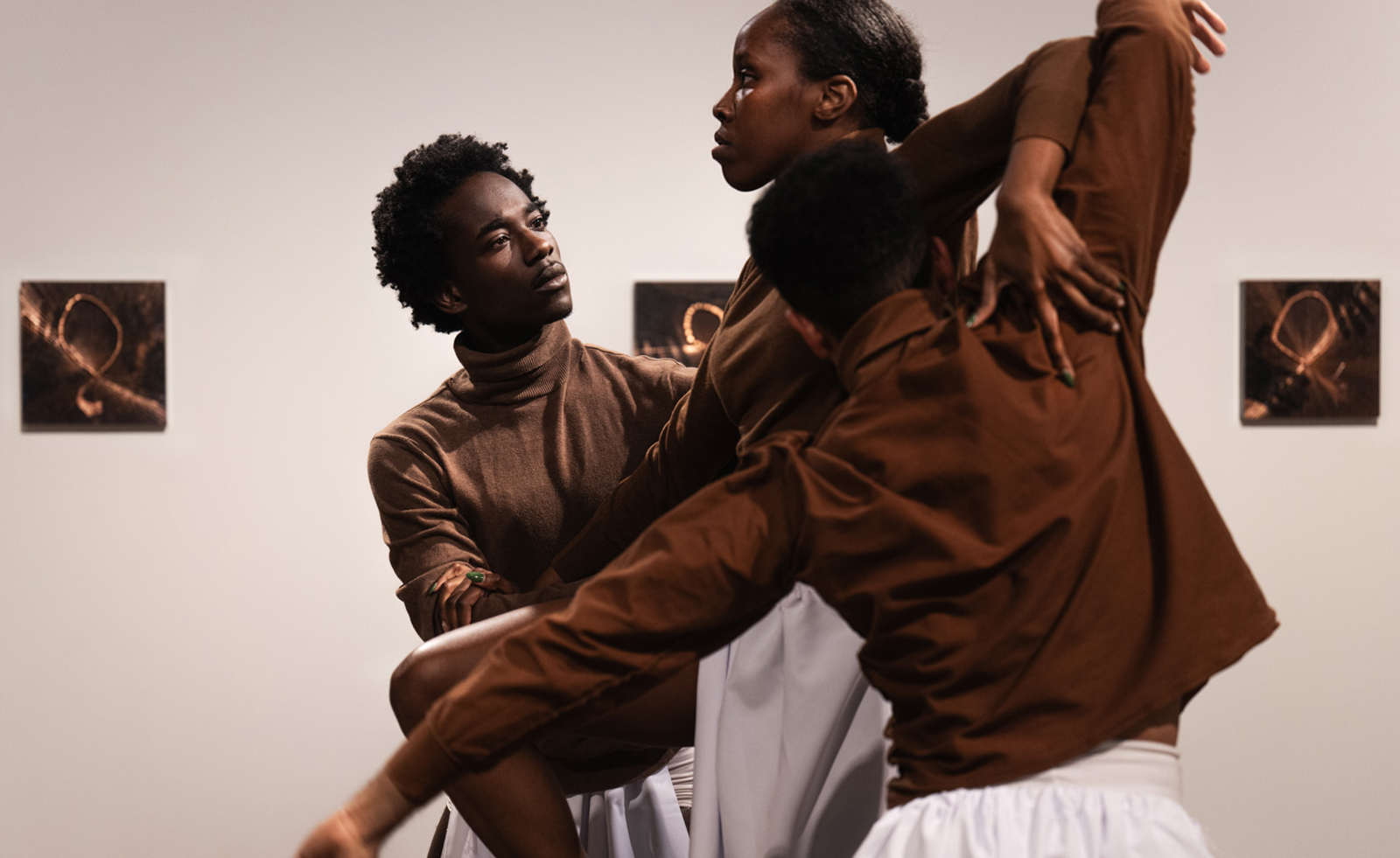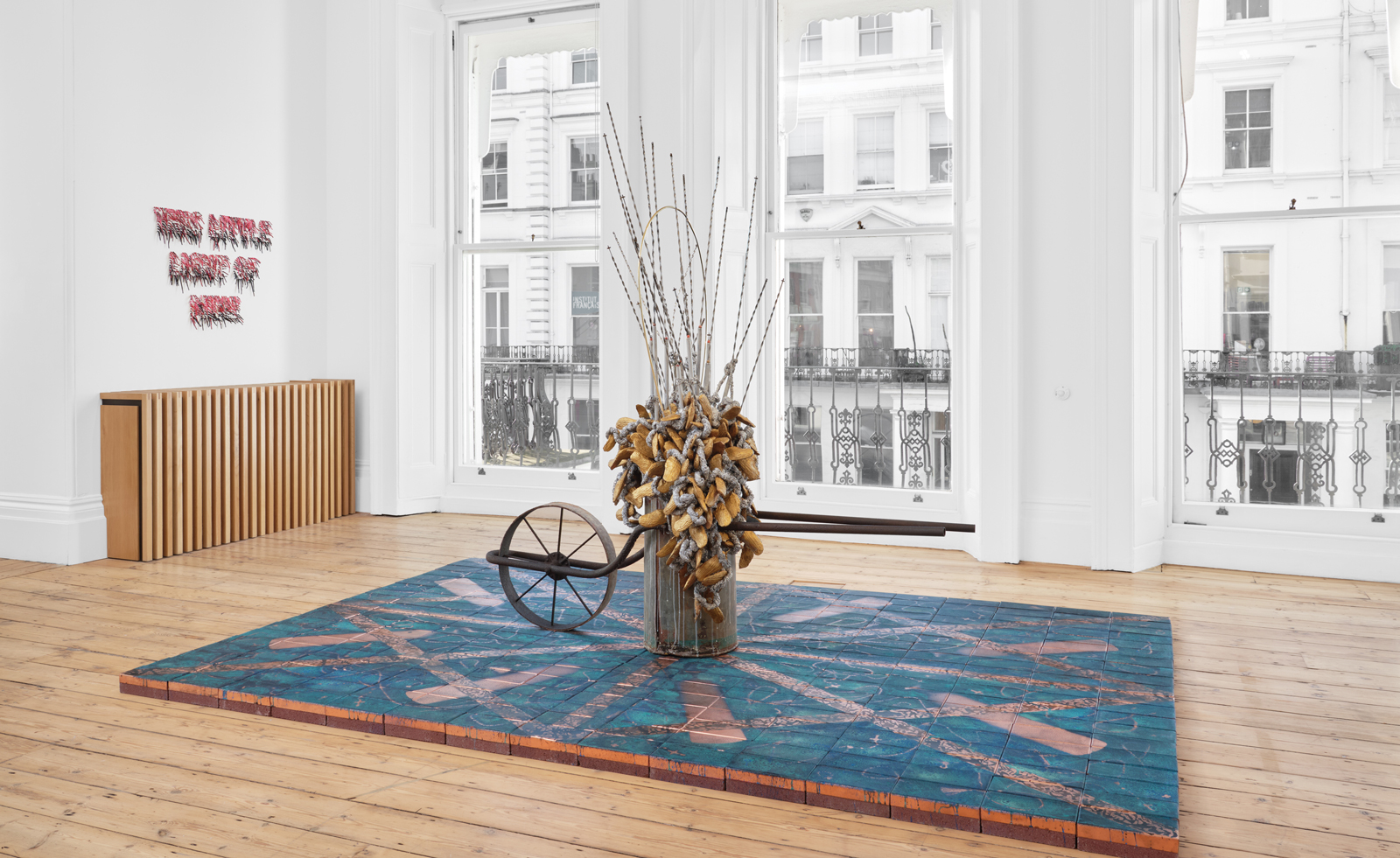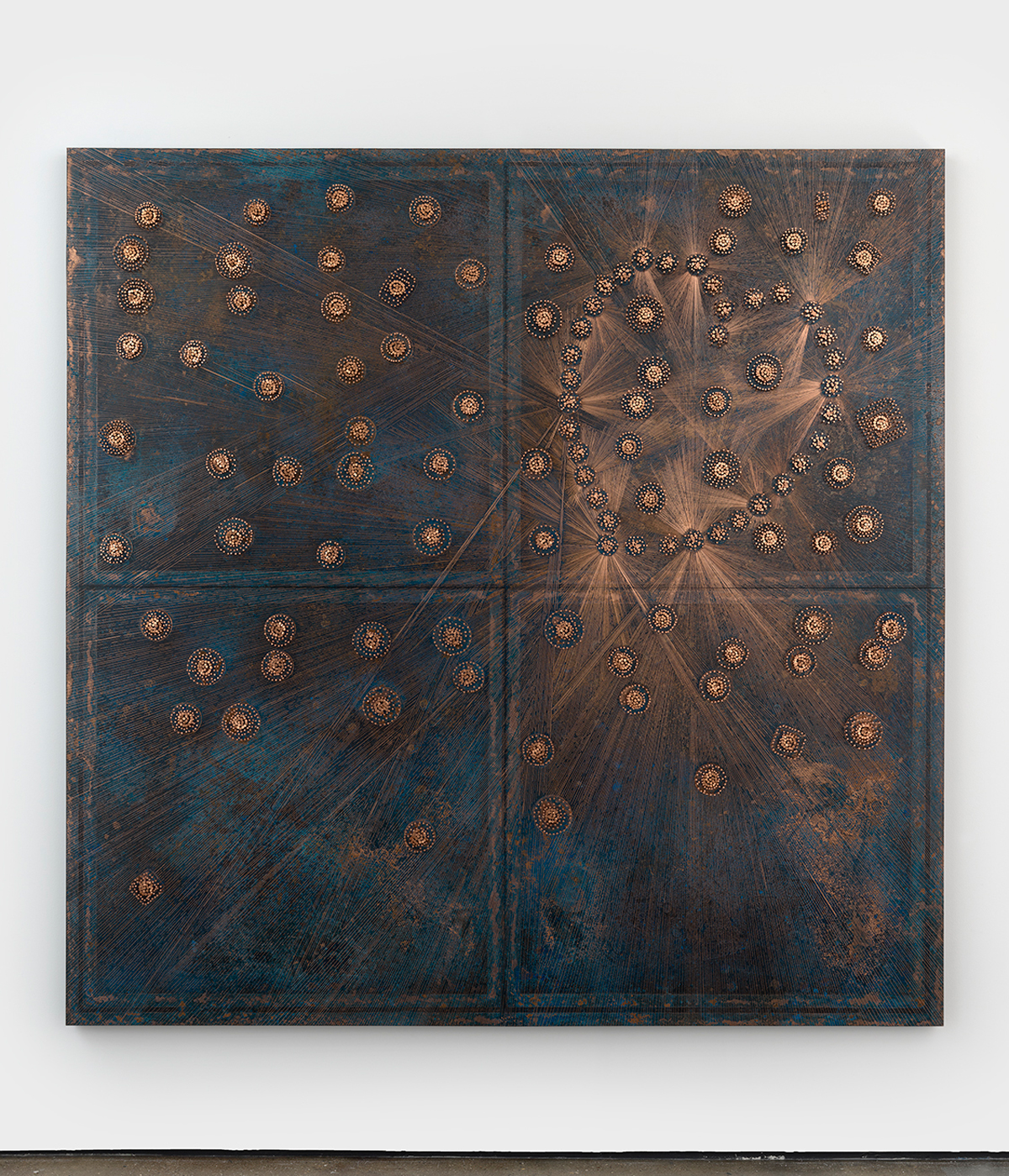Nari Ward combines dance and materiality in London
Jamaican-born, New York-based Nari Ward reuses and reappropriates materials at Lehman Maupin in London

Artist Nari Ward is inspired by the tradition of staging yard shows in the American South, where individuals customise the exteriors of their homes using found objects, and also take anything from old furniture to crushed cans and create art along the boundary of their homes.
‘It’s when regular people, who aren't trained in the arts, have materials that are laying around, and organise them in such a way that it kind of reflects their ideas about systems of creation, belief systems related to religion, or even anxiety… It's always a kind of boundary space but [one] that's embellished, to give the identity or the belief structure of that individual,’ Ward explained over video chat.

Installation view, Nari Ward, ‘Balance Fountain’, until 6 January 2024, Lehmann Maupin London
Elements of this inspiration are visible in Jamaican-born, New York-based Ward’s work, from the collection, reuse and reappropriation of materials to the organic processes of assemblage which can take place long after a work might be ‘finished’ in the traditional sense. This can mean either physically altering the work or staging performances in the work or collaboratively including works in performance and dance (he has staged works at New York’s Dance Space). Ward is also inspired by the questions his approach raises about who an artist of any level makes art for.
Balance Fountain, 2013-14, the work at the centre of Ward’s show of the same name at Lehman Maupin in London, has all these elements. The work comprises a barrow, placed on copper tiles, marked through a secret method of corrosion with items that resonate with Ward’s practice – rosaries, keys – and filled with objects. The piece was then activated by dancers, whom Ward gave free rein to create their performance.
These elements of letting go and experimentation are also key to Ward’s practice. He uses sugar and soda to alter materials, like in the work Empire, 2023, in which he applied Tropical Fantasy soda (rumoured to be manufactured by the KKK) to balls of cotton, altering their surface over time. Encased in an old, glass-fronted display cabinet, painted black, the work feels like a memento mori.

Nari Ward, Balance Fountain, 2013-2014. Wheel barrow, window balances, mango seeds, aluminet shade cloth, broken mirror
There is protest throughout the work both in the text work, This Little Light of Mine, and the drawing, Peace Walk: Rally, 2023, a mix of lines, almost shooting stars, and nails. This idea of bringing in light runs throughout the exhibition, from the scoring of the copper materials used throughout the show to the use of natural light in the domestic setting of Cromwell Place.
‘It's between the intimacy of materiality and the image, or the surface, and the notion of taking on the volume of the space,’ Ward explains. ‘I was happy to engage with the promo space, because it didn't demand the big challenge of claiming volume, like, owning that space? Because it's such an intimate, domestic space, it allowed me to even double down on the intimacy.’
Receive our daily digest of inspiration, escapism and design stories from around the world direct to your inbox.
While this scale is at the opposite end of some of Ward’s works – which can only be called monumental, and will be explored in a show at Milan’s Hangar Bicocca next spring – all of them retain the mark of the hand, making them at once overwhelming and intimate in their presentation.

Nari Ward, Peace Walk: Rally, 2023, copper sheet, copper nails, and darkening patina
‘I have to really consider spaces as material, and then I have to think, what is that distance and ask, when you get closer, what am I giving the viewer, what is the reward for them to want to approach it and spend time in it?’
The combined elements of concept, process, scale and the rejection of the finite end of an artwork come together in a way that is inviting and warm despite their layered complexity.
‘Nari Ward: Balance Fountain’ until 6 January 2024. Lehmann Maupin London
Amah-Rose Abrams is a British writer, editor and broadcaster covering arts and culture based in London. In her decade plus career she has covered and broken arts stories all over the world and has interviewed artists including Marina Abramovic, Nan Goldin, Ai Weiwei, Lubaina Himid and Herzog & de Meuron. She has also worked in content strategy and production.
-
 The Bombardier Global 8000 flies faster and higher to make the most of your time in the air
The Bombardier Global 8000 flies faster and higher to make the most of your time in the airA wellness machine with wings: Bombardier’s new Global 8000 isn’t quite a spa in the sky, but the Canadian manufacturer reckons its flagship business jet will give your health a boost
-
 A former fisherman’s cottage in Brittany is transformed by a new timber extension
A former fisherman’s cottage in Brittany is transformed by a new timber extensionParis-based architects A-platz have woven new elements into the stone fabric of this traditional Breton cottage
-
 New York's members-only boom shows no sign of stopping – and it's about to get even more niche
New York's members-only boom shows no sign of stopping – and it's about to get even more nicheFrom bathing clubs to listening bars, gatekeeping is back in a big way. Here's what's driving the wave of exclusivity